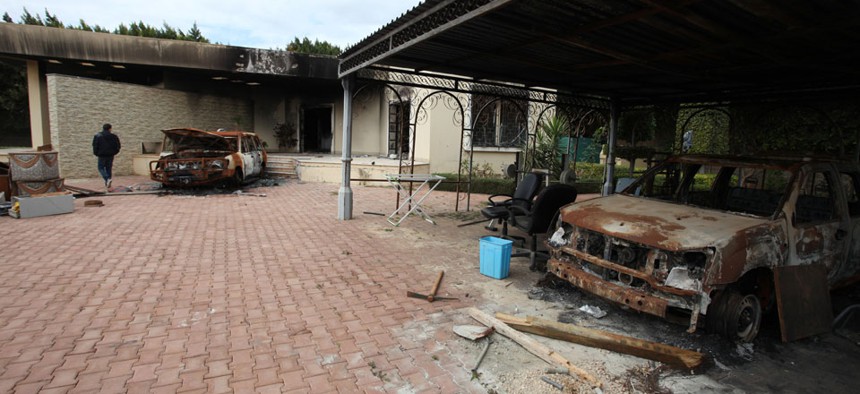
Charred vehicles occupy the remains of the U.S. Consulate in Benghazi in September. Mohammad Hannon/AP
A New Reconstruction of the Deadly Night in Benghazi
Fresh details won't necessarily answer the larger questions about the attack.
A new book purports to tell the "untold story of the attack in Benghazi," but based on the excerpt published in the new Vanity Fair, the newer, more intimate details won't necessarily answer the larger questions about the attack.
The excerpt from the upcoming book "Under Fire," focuses on the 40 minute span between when the attackers first burst through the gates of the American compound in Benghazi and the death of Ambassador Christopher Stevens, who was overcome by smoke when the buildings were set on fire. Authors Fred Burton and Samuel M. Katz appears to have pieced together their account from public records and the personal stories of some of the Diplomatic Service agents who were part of the security detail that night, including one who attempted (unsuccessfully) to lead Stevens and Sean Smith to safety.
While they've managed to put together a step-by-step narrative from the eyes of a few specific witnesses, they're left to fill in many of other the details with overly dramatic purple prose:
The DS agents ran like sprinters toward their stowed weapons and equipment. Their hearts rushed up their chests, to the back of their throats; their mouths dried up in the surge of adrenaline. The agents attempted to draw on their training and keep their minds focused and fluid as they hoped to avoid an encounter when outnumbered and outgunned. The sounds of guttural Arabic voices, which sounded like angry mumbling to the Americans, grew, and the odd vicious shot was fired into the September sky. The bitter smell of cordite, like a stagnant cloud left behind following a Fourth of July fireworks display, hung in the air. Numerous figures, their silhouettes barely discernible in the shadows, chased the agents from behind, chanting unintelligibly and angrily.






